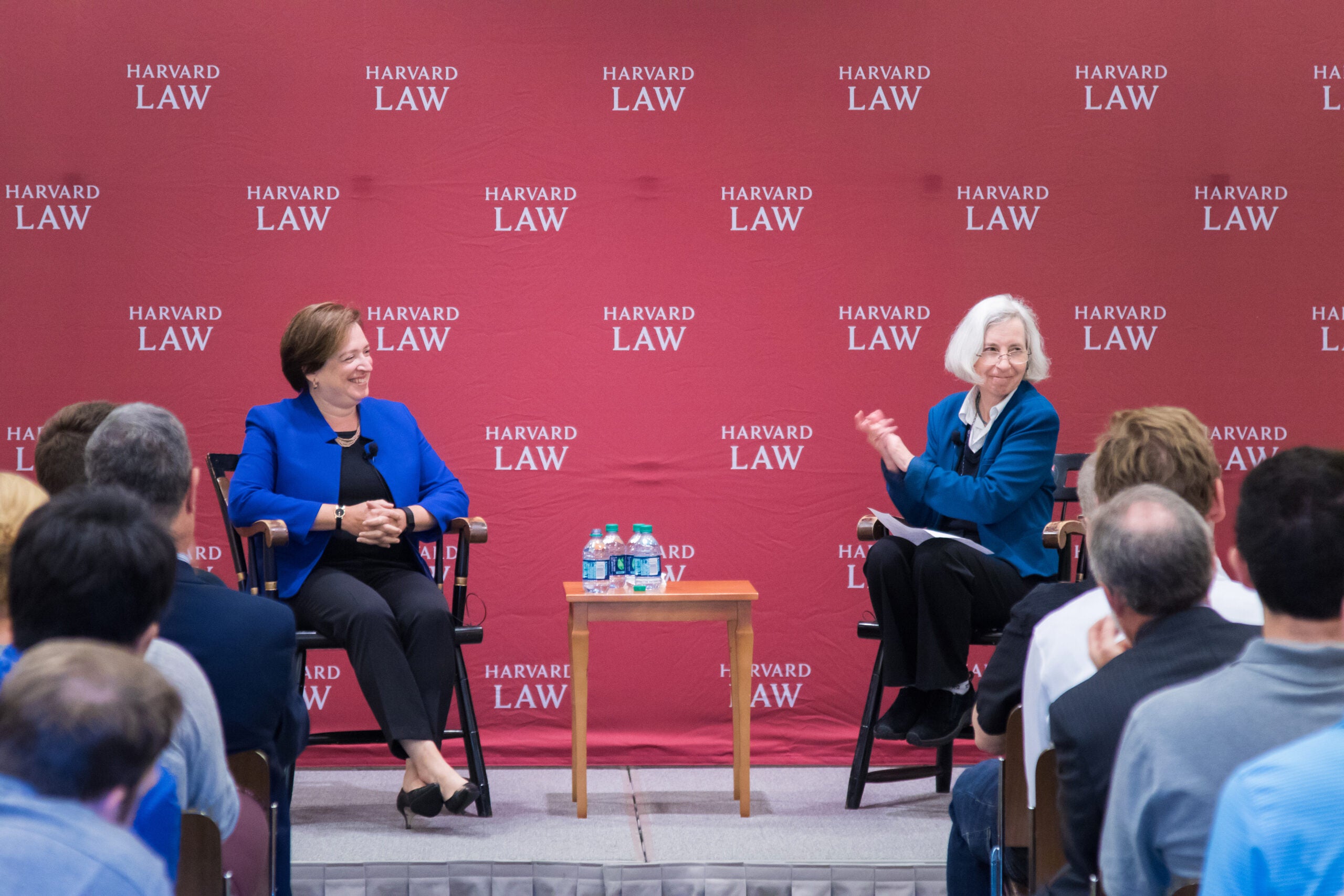Associate Justice of the U.S. Supreme Court and former Harvard Law School Dean Elena Kagan ’86 returned to campus on Sept. 8 to trace the trajectory of her career and offer advice to newly minted students in a talk with HLS Dean Martha Minow.
Appearing before a crowd brimming with 1Ls and LLMs, the current and former deans discussed the differences Kagan observed between being the head of a law school, the Solicitor General of the United States, and a jurist on the high court.
During her deanship, Kagan spearheaded curricular reform (an effort led by Martha Minow), recruited new faculty stars, and oversaw the design of the new Wasserstein Hall, Caspersen Student Center, Clinical Wing building, the heart of HLS, to which she conceded, “The architect helped.”
Yet the contribution she says most students affiliate her with is bringing free coffee to campus.
“Still what I’m known for,” she said.
At the helm of HLS, no two days were the same for Kagan.
“As dean, you wake up and don’t know what’s going to be put on your plate,” Kagan said. “I used to think that the best part of being dean was that I exercised a lot of different muscles and found out how to do a lot of different things.”
Transitioning to the Solicitor General role, Kagan became the lead person at the U.S. Department of Justice responsible for all of the country’s appellate litigation. In this post, she’d frequently appear before the Supreme Court on behalf of the government. Standing at the podium before justices bombarding questions was no easy task, she recalled, as it afforded “not much time to speak, let alone think.”
“The Socratic method is a great, great training ground for that,” Kagan said, pointing to the cold-call method of dialogue between professor and student. “You need to be fluent in the language of the law and get to the heart of the matter.”
Now donning a robe, Justice Kagan says she uses the same muscle set every day, and is “always the same person when [she] wake[s] up in the morning.”
The 112th Justice and fourth woman to serve on the high court has slid into a routine in which she reads briefs, hears oral arguments, conferences with her colleagues about cases, and writes in her chambers.
“The excitement and challenge comes from the substance, often very meaningful legal issues,” Kagan said. “I have the responsibility and privilege of adding my thoughts to the resolution of them.”
In a solemn tone, she noted that the Court has not been the same since the death of her former colleague Justice Antonin Scalia, a conservative icon who revolutionized the way judges read statutes and interpret the Constitution. Kagan praised Scalia’s “incomparable” intellectual and writing abilities, which may have inspired Kagan’s own sharp arguments and clear opinions. Outside chambers, the pair went on hunting trips in Virginia together, and forged a friendship.
In addition to leaving a major void on the bench, Scalia’s passing has led the eight-justice Court to issue a number of opinions resulting in 4-4 deadlocks, which has hamstrung the Court’s decision-making.
“You can’t do that with tie votes,” Kagan said. “We’re here for a reason: to make decisions.”
On a lighter note, Kagan explained the “special duties” she has as the Court’s junior Justice, which include opening the door to the conference room where the justices meet, taking notes on deliberations, and serving on the Court’s cafeteria committee.
“You get onto this Court and you think you’re an important person, but then you have to spend over an hour a month thinking about chocolate chip cookies,” she said.
In a parting note to law students, Justice Kagan offered three nuggets of advice: explore new areas of interest, get to know one professor well, and learn from peers with different views.
“The world is open to you with a J.D.,” she said.
Nadia Farjood is a 2L and was a student in Justice Kagan’s Reading Group on the Supreme Court’s 2015 Term.
